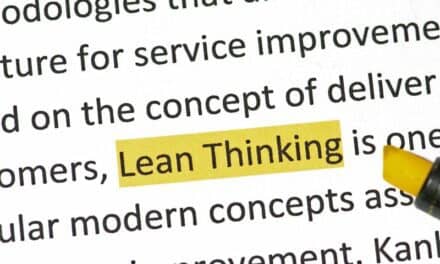By Patrick Lynch, CBET, CCE, CHTM, CPHIMS, FACCE
Here are 10 quick and easy tips for you to use when planning in your hospital, based on my own experience and observations. Note: All “rules” are based upon a general hospital, which offers a broad spectrum of services. If you have any differing opinions or additional “Rules of Thumb,” however, please let me know.
1. Experienced HTMs (in the same job at the same hospital) can take care of approximately 10% more equipment each successive year. The reason for this is that as biomeds become more knowledgeable about the departments they serve, the customers they interact with, and the equipment they maintain, their ability to go straight to the heart of a problem becomes more keenly honed. This is yet another reason to retain employees and not take them for granted.
2. The department staff handles roughly 1,700 pieces of general biomedical equipment, valued at $5 million—with imaging specialists handling $12 million worth of equipment. Although there is controversy surrounding this rule of thumb, the fundamental assumption is that there are no labor contracts on any of the equipment being counted. The exact mathematical “formula” continues to be a closely guarded secret; however, the calculations are ridiculously simple, with three or four factors at most. They are not the complicated, multivariate, logarithmic, Laplace transforms that only geniuses could understand.
Pricing and staffing for an entire hospital can be done with a four-function calculator and a couple of hours to spare. The biggest challenge is just getting an accurate inventory. But examining the staffing and pricing for literally hundreds of hospitals throughout my 43-year career—23 years of which were spent selling biomedical repair services—yielded the above norms. Even so, they may vary slightly, based on non-equipment responsibilities and the frequency of staff turnover.
3. In a general hospital, the equipment value is divided as follows: 50% for imaging devices, 6% for laboratory equipment, and 44% for general biomedical devices. This, too is based upon the analysis of more than 300 U.S hospitals and assumes that all imaging, laboratory, and general biomedical equipment is inventoried and tallied accurately.
4. Manufacturer contracts (full-service, per year) cost approximately 18% of the total new equipment cost. Averaging the cost of 24×7 contracts, parts included contracts on all types of medical devices reveals a range of 12% to 20% of the original price, not including software licensing fees. Software-only contracts and support fees tend to be whatever the market will bear and, thus, are often higher than 25% per year.
5. In a mature program with few contracts, in-house biomedical costs can operate at a ratio of about 4%-6% of the original equipment cost. Some outsourced programs may operate this efficiently, but the true cost must include all extra billings that make up the biomed budget. Outsourced departments often bid low to get the business, but the customer is then billed for everything outside the contract, such as batteries, patient cables, overtime, etc.
6. Electrical safety testing (EST) takes about 15 minutes to complete—locate, test, document— on average.
7. Most general biomed PMs average 40 minutes. Averaging many man-years of data reveals that preventive (or scheduled) maintenance of normal (non-imaging, non-laboratory) medical equipment averages about two-thirds of an hour. This includes PMs, which are just EST, combined with a visual inspection.
8. In a general biomedical setting, repair work orders take about one hour. Doing a simple division of many man-years of data indicated that most repairs average about one hour to complete. Laboratory and imaging are significantly higher— as much as double, on average.
9. In a hospital that uses a risk-based PM system, approximately one-third of their medical devices are not scheduled for a PM. Extremely aggressive programs can raise this to nearly 50%. But what surprises me is that so many U.S. hospitals still insist on placing their hands on every item of equipment at least once a year. And I’ll bet their rate of medical device patient injury doesn’t vary 0.000001% from the risk-based departments.
10. More than half of the time, the HTM shop is located in the basement, has no cell phone coverage, and shares at least one common wall with the morgue. I found this to even be true in Havana, Cuba, when I visited Hospital of the Americas—Cuba’s largest hospital—a few years ago. The hospital is 25 stories tall, but biomed is—you guessed it!—in the basement, around the corner from the morgue. Who woulda thunk it?
Patrick Lynch is a biomedical manager with 40 years’ experience. Questions and comments can be directed to [email protected].






I love it, I love it, I LOVE IT!! Especially # 10! and one other wall is attached to an elevator shaft. In all seriousness, these are simple formulae that you can use to present your value to the almighty administration machine. However, you MUST impress upon your people to account for their activities. Otherwise you have NOTHING to present to the hospital administration, and that’s what you get in return.
#10 is also applicable to every military hospital I have ever been in!
In KY, my shop doesn’t share a wall with the Hospital morgue but it is within 20 ft down hall. My shop doesn’t even have AC during the summer or heat in the winter!
Good and accurate data that we knew in the 80’s but received little attention. As we moved towards risk-based PM systems in the 90’s some of us achieved remarkable savings, while others were not allowed to change because they saw little value in collecting data. I have always felt a good risk-based PM system could achieve at least 75% utilizing this data and writing their own PM plans. Medical Equipment reliability has increased so much in the past 40 years that visiting every piece of equipment is just not necessary.
Item 10 is inconsistent with item 6. If the shop is in the basement of a far flung facility what is the travel time from shop to the target piece of equipment? Does this travel time include interacting with those you encounter along the way? What percentage of the encounter time is directly mission related?
Thanks Pat,
I’m glad someone put those in black and white. I could probably add a few that list but, those things would be considered as derogatory towards operates, nurses physicians…We all know what I’m getting at.
And for #10 It’s very true. I had spend 15 years going from the basement to the 5th floor. Then they built a new hospital to replace the one built in A-wing 1924 and B-wing 1936 about 1/4 mile away. Did the BMET office move to the new building? No! There is a satellite office that didn’t have enough room actually be used as satellite office. I was able to put a Bird 8400 Ventilator and my traveling circus.
Today I’m working in a different facility. I’m in am office on the 1st floor next to Plant OPS office, receiving, IT and the cafeteria. We don’t have basement or any other floors. Today, I do have room my traveling circus, chair, stool, work bench with all my supplies.
Have I been elevated in my 33 years as a BMET. The jury is still out.